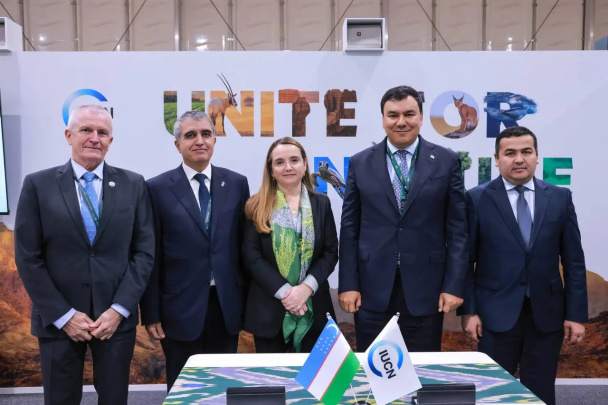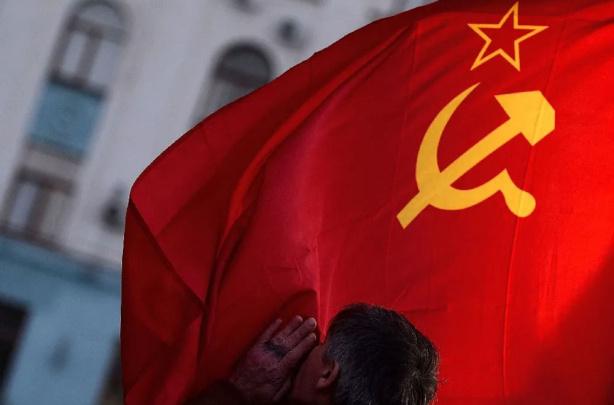Annual inflation in Uzbekistan accelerated

Photo: Getty Images
In 2022, in Uzbekistan, mainly, prices for food products (15.6%) and non-food products (10.7%) increased. Growth in prices for paid services remained moderate at 8.4%. Investments in fixed capital at the end of the year decreased by 0.5%.
2022 has become a period of serious trials for the economy of Uzbekistan. The post-pandemic recovery was under pressure from the instability of the global environment, difficulties in the economies of the countries that are the main trading partners, price shocks in global markets, disruption of transport and logistics chains, and general uncertainty of the situation.
According to experts from the Center for Economic Research and Reforms (CERR), at the same time, the economy of Uzbekistan has demonstrated resistance to external challenges. As the State Statistics Committee reported, the gross domestic product (GDP) of Uzbekistan increased by 5.7% in 2022, but the growth rate slowed down compared to 2021 (7.4%).
The situation in the main trading partner countries developed differently against the backdrop of an unfavorable external environment. In Kyrgyzstan, GDP in 2022 grew by 7%, while at the end of 2021 the growth was 3.6%. In Kazakhstan, there is a slowdown in growth rates from 4.3% in 2021 to 3.1% in 2022.
According to experts, China’s GDP growth rate slowed down last year and amounted to about 3%. The economy of the Russian Federation at the end of the year, against the background of the conflict and sanctions, went into recession. Thus, according to the estimates of the Ministry of Economic Development of the Russian Federation, the Russian economy decreased by 2.1% in January-November compared to the same period in 2021.
Inflation in Uzbekistan in 2022 accelerated from 10% to 12.3%. This is largely due to the global rise in prices, the rise in the cost of products in the countries that are the main suppliers to the Uzbek market. For example, in Russia, which accounts for about 20% of imports, inflation over the year increased from 8.4% in 2021 to 11.9% in 2022. In Kazakhstan (about 11% of imports), over the same period, inflation increased from 8 .4% to 20.3%.
In Uzbekistan, in 2022, mainly, prices for food products increased by 15.6% (in 2021 – 13%) and non-food products – by 10.7% (7.8%). Growth in prices for paid services remained moderate at 8.4% (7.7%).
Investments in fixed capital at the end of the year decreased by 0.5%. At the same time, the trend towards the reduction of centralized investments continues, the volume of which decreased by 23%. Regulatory restrictions on attracting foreign investment, government-guaranteed loans and credits led to their reduction by 33%. Investments from the budget were also reduced by more than 15%.
At the same time, there is an increase in non-centralized investments by 4.9%. In particular, foreign direct investment and loans, which account for the bulk of non-centralized investment, increased by 1.3% to reach US$8.5 billion. Investments also grew at the expense of enterprises by 8.9%, household funds – 3.2%, commercial bank loans and other borrowed funds – 7.8%. In general, the share of non-centralized investments in the total volume of investments increased from 80.8% to 85.1% over the year, while the share of centralized investments decreased from 19.2% to 14.9%, respectively.
At the end of 2022, an increase in output is observed in all economic sectors.
The growth rate of the industry slowed down somewhat compared to 2021 to 5.2% (in 2021, the growth was 8.8%). The largest increase is observed in the sector of electricity, gas supply, steam and air conditioning by 12.7%. The volume of production in the manufacturing industry increased by 5.3%. In the extractive sector, growth rates slowed down from 10.8% in 2021 to 2.1% in 2022. Meanwhile, the production of consumer goods in 2022 accelerated significantly to 19.4% (in 2021 – 13.9%).
The service sector increased by 15.9% in 2022 (in 2021 – 19.5%). Growth is observed in all areas. The fastest growing in 2022 was financial services – 29.3%, communication and informatization services – 25.5%, education – 15.3%, accommodation and food – 14.7%, rent and rental – 12.2%, healthcare – 11.5%. In the transport sector, the volume of services rendered increased by 12.4%, motor transport services – 6.5%, passenger turnover – 5.6%. Meanwhile, the growth rate in terms of cargo turnover slowed down from 11.8% in 2021 to 0.5% in 2022. On the contrary, the growth rate of retail trade turnover accelerated from 12% in 2021 to 12.3% in 2022.
In the construction sector, growth rates practically remain at the level of last year – 6.6% against 6.8% in 2021. In agriculture, the growth rate slowed down somewhat to 3.6% (in 2021, output increased by 4%).
Foreign trade activities continued to expand in 2022. For the first time in the history of independence, the volume of foreign trade reached $50 billion, having increased by 18.6% compared to 2021. Also, export indicators became record-breaking in 2022, the volume of which at the end of the year exceeded $19 billion with an increase of 15.9% (in 2021, an increase was 10.3%). Import for the period under review increased by 20.4%.
The growth of exports in 2022 is due to an increase in the supply of food products abroad by 24%, energy carriers and oil products by 34%, chemical products by 17%, machinery and equipment by 41%. Textile exports grew by 8.6% and reached $3.2 billion. The volume of exports of services increased by 1.5 times and amounted to $4 billion. It should also be noted that the same amount of gold was exported in 2022 as in 2021 – $4.1 billion.
In imports, the main increase is accounted for by an increase in the supply of machinery and equipment by 16%, chemical products by 19%, food products by 35%, non-ferrous metals and products from them by 45%, ferrous metals and products from them by 18%, energy carriers and oil products 15%. Services import volumes increased by 43%.
In general, despite numerous external and internal challenges in 2022, the economy of Uzbekistan has demonstrated resilience. Forecasts for growth rates for 2022 were almost achieved. Naturally, shocks and the global situation had a negative impact on economic development, which resulted in a slowdown in growth rates in economic sectors and an acceleration of inflation.
At the same time, despite the decline in investment at the end of the year, we can talk about positive investment activity, as the private sector increased injections into production. Despite the difficulties in foreign economic activity, there was an increase in non-commodity exports and diversification of the geography of product supplies abroad.
According to international experts and organizations, 2023, against the backdrop of increased geopolitical confrontation, continued uncertainty about the situation with the coronavirus, poses serious challenges for the global economy and risks of a global recession.
Thus, the economy of Uzbekistan in the current year will continue to develop in adverse conditions. Taking into account external risks, GDP growth is projected at 5.3% in 2023, with acceleration in subsequent years.
Recommended
List of streets and intersections being repaired in Tashkent published
SOCIETY | 19:12 / 16.05.2024
Uzbekistan's flag flies high on Oceania's tallest volcano
SOCIETY | 17:54 / 15.05.2024
New tariffs to be introduced in Tashkent public transport
SOCIETY | 14:55 / 05.05.2023
Onix and Tracker cars withdrawn from sale
BUSINESS | 10:20 / 05.05.2023
Latest news
-
Heavy rain may trigger flood risk in mountainous areas of Uzbekistan – Uzhydromet
SOCIETY | 16:02
-
Uzbekistan plans to boost precious metals processing to 7 tons, jewelry exports to $300M
SOCIETY | 15:49
-
President Mirziyoyev reviews economic progress in Namangan
POLITICS | 15:00
-
Uzbekistan and Azerbaijan submit joint bid to host 2027 FIFA U-20 World Cup
SPORT | 14:58
Related News

17:37 / 03.12.2024
IUCN Representative Office in Uzbekistan officially begins operations

20:54 / 14.09.2024
Uzbekistan improves its position in global cybersecurity index

18:49 / 03.09.2024
Samarkand resident who campaigned for USSR restoration brought to criminal liability

19:58 / 15.08.2024



